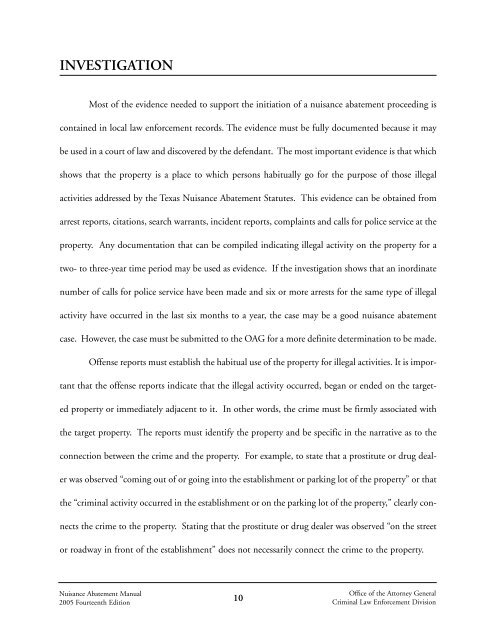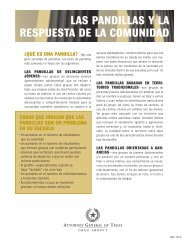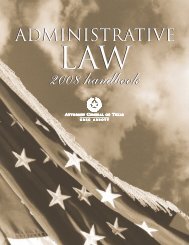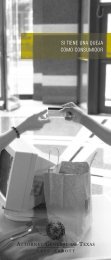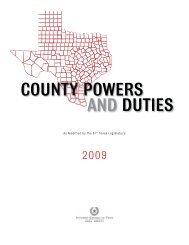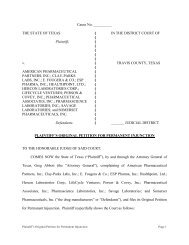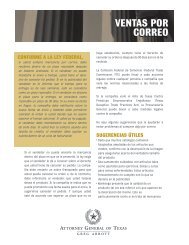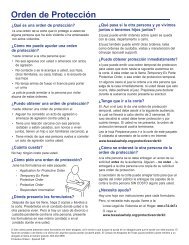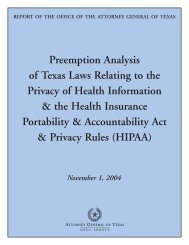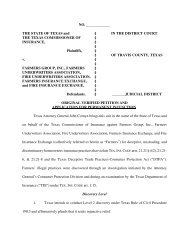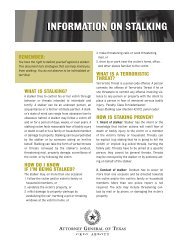Nuisance Abatement Manual - 2005 - Texas Attorney General
Nuisance Abatement Manual - 2005 - Texas Attorney General
Nuisance Abatement Manual - 2005 - Texas Attorney General
You also want an ePaper? Increase the reach of your titles
YUMPU automatically turns print PDFs into web optimized ePapers that Google loves.
INVESTIGATION<br />
Most of the evidence needed to support the initiation of a nuisance abatement proceeding is<br />
contained in local law enforcement records. The evidence must be fully documented because it may<br />
be used in a court of law and discovered by the defendant. The most important evidence is that which<br />
shows that the property is a place to which persons habitually go for the purpose of those illegal<br />
activities addressed by the <strong>Texas</strong> <strong>Nuisance</strong> <strong>Abatement</strong> Statutes. This evidence can be obtained from<br />
arrest reports, citations, search warrants, incident reports, complaints and calls for police service at the<br />
property. Any documentation that can be compiled indicating illegal activity on the property for a<br />
two- to three-year time period may be used as evidence. If the investigation shows that an inordinate<br />
number of calls for police service have been made and six or more arrests for the same type of illegal<br />
activity have occurred in the last six months to a year, the case may be a good nuisance abatement<br />
case. However, the case must be submitted to the OAG for a more definite determination to be made.<br />
Offense reports must establish the habitual use of the property for illegal activities. It is important<br />
that the offense reports indicate that the illegal activity occurred, began or ended on the targeted<br />
property or immediately adjacent to it. In other words, the crime must be firmly associated with<br />
the target property. The reports must identify the property and be specific in the narrative as to the<br />
connection between the crime and the property. For example, to state that a prostitute or drug dealer<br />
was observed “coming out of or going into the establishment or parking lot of the property” or that<br />
the “criminal activity occurred in the establishment or on the parking lot of the property,” clearly connects<br />
the crime to the property. Stating that the prostitute or drug dealer was observed “on the street<br />
or roadway in front of the establishment” does not necessarily connect the crime to the property.<br />
<strong>Nuisance</strong> <strong>Abatement</strong> <strong>Manual</strong><br />
<strong>2005</strong> Fourteenth Edition<br />
10<br />
Office of the <strong>Attorney</strong> <strong>General</strong><br />
Criminal Law Enforcement Division


